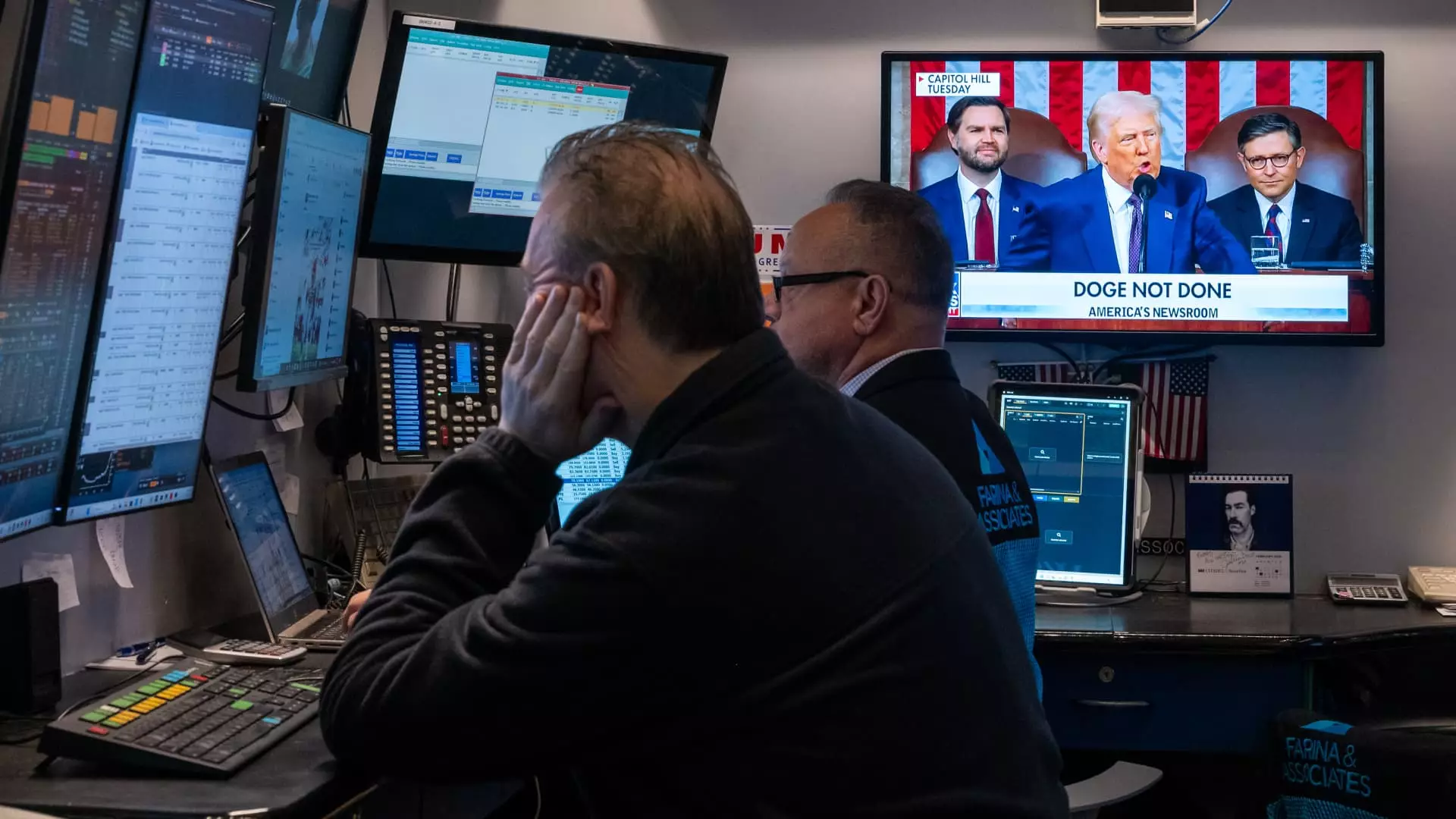In a tumultuous financial climate, concerns about market stability are ever-present. Goldman Sachs Asset Management, recognizing this growing unease among investors, recently unveiled the Goldman Sachs U.S. Large Cap Buffer 3 ETF. This initiative, spearheaded by Bryon Lake, aims to lure those seeking a shield against potential downturns in the stock market. With rising tariffs, shifting equity markets, and geopolitical strife adding to the anxiety, the timing of this launch speaks volumes about Wall Street’s current mindset.
The Psychological Appeal of Buffer Products
Buffer ETFs, such as the one introduced by Goldman Sachs, tap into a primal psychological need: the desire for security amidst chaos. Lake’s assertion that these products protect investors from losses between 5% and 15%, while allowing for gains of 5% to 7%, is notably enticing. The notion of participating in upside performance while being cocooned from moderate market dips is powerfully appealing. Yet, this approach raises critical questions: Is it just sophisticated marketing, or are we witnessing a fundamental shift in how wealth is managed?
Critique of Traditional Protective Strategies
For decades, traditional investment wisdom has centered on diversified portfolios, often bolstered by bonds or stable equities to weather financial storms. The emergence of buffer ETFs challenges this norm, asking investors to reconsider their strategies. While it’s tempting to lean on historically successful tactics, one must ponder whether these “tried and true” methods are adequate for today’s unique economic landscape. Are we merely repackaging old ideas instead of innovating in ways that genuinely address the complexities of modern markets?
Performance Metrics and Investor Expectations
Goldman Sachs’ U.S. Large Cap Buffer 3 ETF, despite its promise, has already registered a disappointing 3% decline since its launch on March 4. In the same breath, the S&P 500 has dropped nearly 4%. This raises a pressing concern: what happens when newly launched products fail to deliver their projected performance metrics? Investors entering this foray based on assurances of downside protection may find themselves disillusioned. This dynamic illustrates the dissonance between marketing narratives and real-world outcomes, underscoring the inherent risks involved in relying on innovative products marketed as foolproof.
The Broader Implications for Investors
As individuals evaluate their investment strategies amid uncertainty, the introduction of products like the buffer ETF represents more than just a new financial instrument. It’s a reflection of a broader shift toward risk mitigation and cautious optimism. Nevertheless, it also begs introspection about our reliance on comfort rather than the unvarnished reality of market risks. In the center-right liberal mindset, the balance of maximizing opportunities while safeguarding against risks becomes paramount. Hence, genuine critical thinking must replace blind trust in financial innovations.
The launch of Goldman Sachs’ buffer ETF serves as a microcosm of the evolving conversation about investment strategy in an uncertain world. As investors, we must remain vigilant, discerning, and willing to adapt, lest we fall into the allure of simplistic solutions amid sophisticated market realities.

